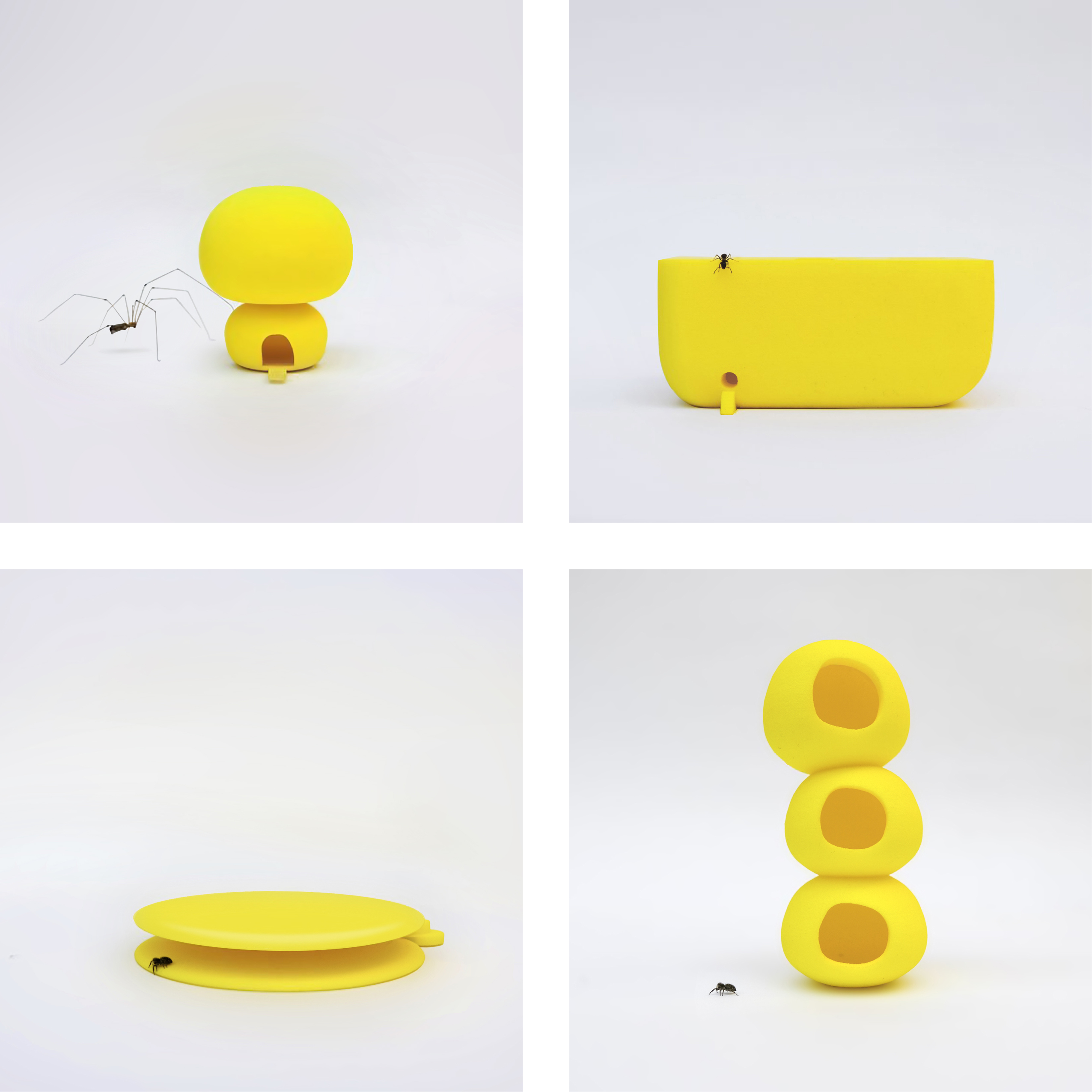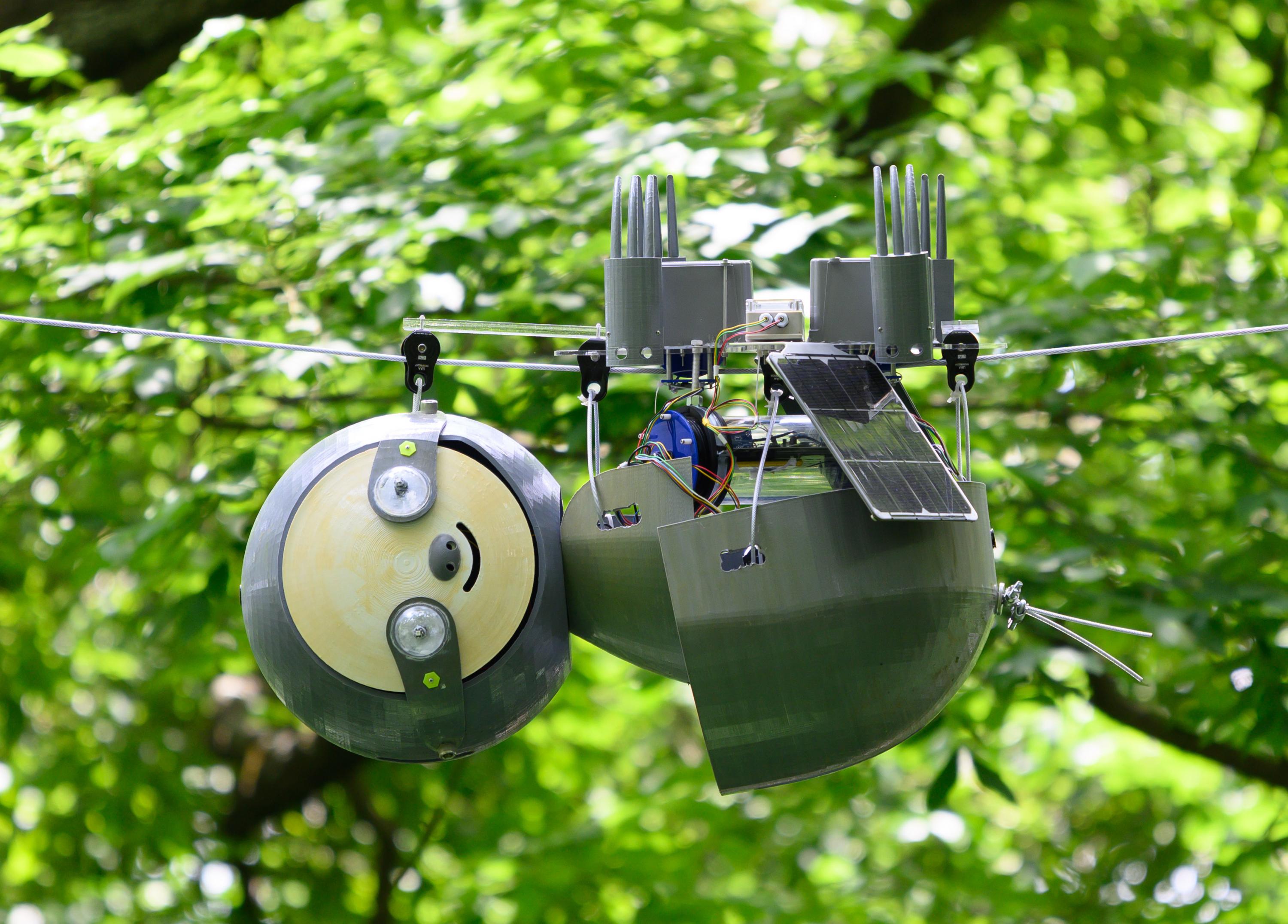Additive manufacturing to the rescue of the animal world

"3D printing has the power to revolutionise the way we make almost everything”. These words from Barack Obama highlighted the immense potential of additive manufacturing. Did you know that today it even contributes to the preservation of wildlife? Animal prostheses, "living green walls" sheltering plants and insects, artificial reefs to regenerate marine ecosystems... This new technology has the power to help many animal lives, whether domestic or wild. Find out more about these 3D projects of today and tomorrow.
Life-saving prostheses
Many animal victims of accidents or diseases can now be saved thanks to prostheses made by 3D printing. Shells, carapaces, beaks, wheels, or artificial legs... this unique process allows to create any imaginable shape. The prostheses, made of various materials, can be adapted to the living environment, the morphology and the specific needs of each species. A parrot with a new beak, a crocodile with a new tail, or a winkle with a brand new shell… these are all examples of how this technology comes to the rescue of animals. The most famous case is undoubtedly that of Derby, one of the first dogs to benefit from adapted 3D prostheses. His new blade-shaped legs allowed this young wolfdog suffering from a malformation of the front legs to finally be able to sit and run as he pleased.
Natural habitats: restoring with 3D printing
3D printers are proving to be powerful tools for rebuilding favorable environments for the maintenance of wildlife. Numerous projects are emerging or, rather sometimes submerging, such as artificial reefs. These structures play a vital role in the preservation of the marine ecosystem. They serve as a bulwark against cyclones and natural disasters, and promote seabed prosperity. The corals offer shelter and food to many species and guarantee good water quality by filtering it naturally.
Following a typhoon in 2018 that caused 80% of the coral loss, researchers in Hong Kong turned to a 3D invention. Their goal? Restore these natural barriers by making artificial clay slabs. Although aesthetically pleasing, they were not designed for this purpose. Their shapes represent those of three endemic species of coral in Hoi Ha Wan Park's waters, one of Hong Kong's six protected marine areas. The 128 pieces were seeded with coral fragments and placed slightly higher than the seafloor to get closer to light sources and nutrients. Scientists hope that within a few decades, the corals that can easily cling to them will have grown enough to support various species once again.
A similar attempt has been made in Sydney waters to deal with the increasing pollution along the dikes. Marine biodiversity has suffered dramatically from urbanisation, particularly the destruction of the mangrove, a living filter that cleans pollutants and particles from the water. The Sydney Institute of Marine Science (SIMS) and the Reef Design Lab have created 3D printed tiles mimicking the root structure of the mangrove. Here, this living wall was not placed at the bottom of the water but vertically on the dikes' walls. The idea? To analyse the change in biodiversity and water quality over 20 years (Interview with Melanie Bishop, one of the project's co-directors).

Closer to home, in the Netherlands, the ARK Natuurontwikkeling and WWF have taken on a new challenge: to fight against seabed desertification in the North Sea. The desertification causes the disappearance of shellfish and especially that of the wild flat oysters. To the north of the island of Schiermonnikoog, six tons of oysters and their artificial habitat were plunged to the bottom. Made of 3D printed ceramic materials or other types of environmentally friendly materials, these artificial reefs aim to perfectly imitate natural structures.
On land too, additive manufacturing is being used to help ecosystems. This is the case for Landboost, a project led by the international engineering and construction company Egis, which aims to promote biodiversity conservation and development in urban areas. They aim to create infrastructures to accommodate animal species that are increasingly struggling to find spaces to reproduce, rest or hibernate. Nesting boxes for birds, insect hotels leaning against walls... In Grenoble, Landboost has already installed 3D barriers to limit highway noise and preserve the surrounding fauna's well-being.
Going the extra mile, NOWLAB - the innovation lab of 3D printer giant BigRep - has produced a structure in collaboration with American artist Lindsay Lawson: the Banyan Eco Wall. This prototype, presented at the Fiction Forum Berlin 2019, has an innovative irrigation and drainage system. Imitating the complex design of a plant, it also intends to function as one thanks to a hydro-circulatory system. This "living wall” can accommodate various varieties of plants and insect species. Its specificities? sustainable manufacturing methods and recycled materials. A possibility for the future?

These insect shelters were designed by Italian architect and designer Angelo Renna. His project “Lesser Houses” aims to protect our homes' unsuspected roommates and highlight the hidden biodiversity they harbor. There would indeed be more than 100 different species of insects living in the hidden corners of our homes. Each creation is designed for a particular animal and is inspired by its natural habitat.
Analysing behavior
3D printing can also be used to study various animal species' behavior to better protect them, especially during the reproduction period. In Costa Rica, researchers from the University of Windsor have experimented with this in their research on tropical yellow frogs.
These amphibians display strange behavior that did not fail to attract the attention of researchers. When the rainy season arrives, male frogs change suddenly their color within one day, evolving from brown skin to a brighter yellow. Why this chromatic variation? To impress females? To indicate to which sex they belong? To study the cause of this transformation, scientists have designed 3D replicas of these animals using photometry. This technique estimates relief and reflectance information by observing an object under different lighting conditions. They were able to watch these amphibians up close through these life-size 3D models. Their discovery? These frogs transform to announce the mating season and thus, more concretely, the reproduction period. It lasts as long as their new color, that is to say, one day!
These jewels of technology were also used to uncover the sexual preferences of the northern map turtle, whose males are smaller than females. The aim was to verify a phenomenon observed by researchers, namely males' clear preference for larger females. With the help of 3D printers, scientists recreated two females of different sizes and placed them at the bottom of a lake, leaving the male to choose his partner. This experiment showed that mating attempts with the larger turtle were indeed more numerous than with the smaller one.
These research projects taking on the form of animals studied can be used to collect other types of data: pollution rate of the seabed, fluctuation of air temperatures and so on. These projects allow us to satisfy our curiosity about the astonishing phenomena of the animal world. However, they are above all intended to protect the fauna and the ecosystems in which it lives and reproduces. Knowing how to preserve nature means being able to understand it.

The Atlanta Botanical Park is home to SlothBot, a robot about 92 cm tall which looks and acts like a sloth. Designed by engineers at the Georgia Institute of Technology (GIT), this 3D robot-animal records data such as temperature and carbon dioxide fluctuations in order to protect endangered species, understand plantanimal interactions or the behavior of pollinators and other hard-tounderstand phenomena.
Today, and hopefully even more so tomorrow, 3D printing increasingly contributes to the protection of wild and domestic animals. What if it was our turn to learn from the animal world? What if additive manufacturing was a handy tool to learn from nature? In the field of science and research, we use the word biomimicry, a vast field of possibilities that is constantly expanding its boundaries with the contribution of this technology. There is no shortage of examples combining biomimicry and 3D printing: more efficient and less energy-consuming vehicles inspired by the skin of sharks or the beak of the kingfisher, or this project, still being studied, such as using the collagen of fish skins to print human cornea to help treat future patients. As additive manufacturing allows the large-scale reproduction of structures from the natural world that were previously very complex to manufacture, its association with biomimicry sounds more than promising.
To be read also in the dossier "3D in the wild":
